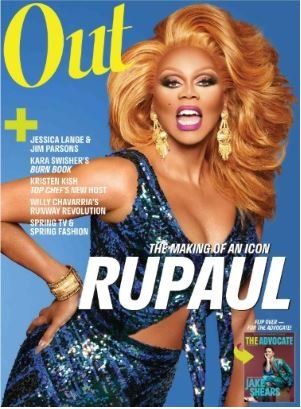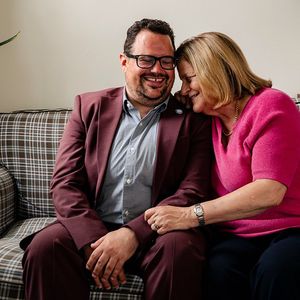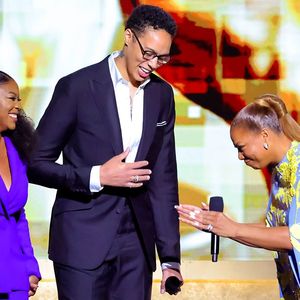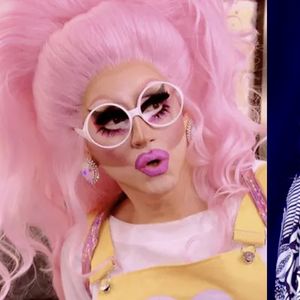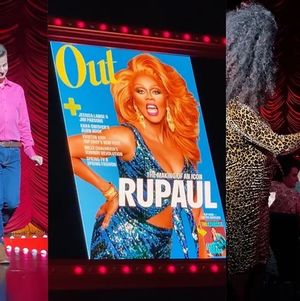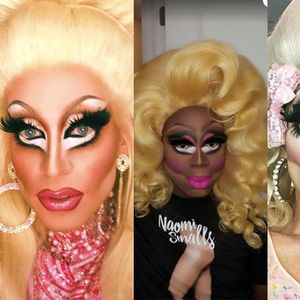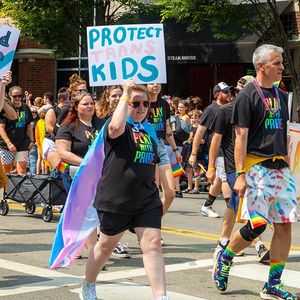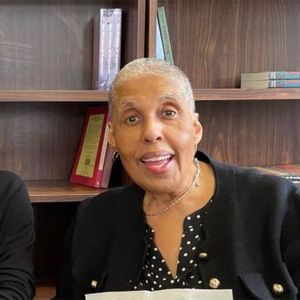A few days before New York's Pride celebrations--45 years after the Stonewall riots that birthed the modern LGBT rights movement--Kyle Abraham was preparing to spend Pride performing in Marseille with his dance company, Abraham. In. Motion. Now 37, the dancer and choreographer had just one stop to make before hitting the airport: his local tattoo parlor. "I got another tattoo earlier this week--a band of Japanese waves," he explained.
"But it needs something above it, otherwise if I'm wearing a tank top it looks like I'm going for '90s beefcake-style, which I'm really not." Abraham breaks into a broad laugh. Although he grew up in a middle-class black neighborhood in Pittsburgh, and was out to friends at 15, he has a vivid memory of having to curb his behaviour on the school bus--"trying to change my voice and really thug it up."
School is far behind him now, and Abraham no longer has to thug it up, but that doesn't mean he feels liberated. "It's still not easy to be gay," he says. "It's just easier." He tells a story of walking through the leafy residential area of Boerum Hill, in Brooklyn, hand-in-hand with his boyfriend. "It's super quiet and safe and carefree but I did not feel safe," he says. "I was thinking all the time, 'A good thing I've been in so many fights in my life--if someone wants to say something, I know what I'm going to do.'"
Abraham survived the walk, but the experience is instructive: gay couples still can not take for granted a gesture as simple and commonplace as walking hand-in-hand, even in a liberal and diverse city like New York. "I'm super out--I will wear my Act Up t-shirt walking down the street--but when it comes to certain levels of intimacy that a lot of heterosexuals take for granted, that's when I start feeling a little uncomfortable," he says. "That's why events like Pride are so important, because it's just that time to walk prideful."
SLIDESHOW | Kyle Abraham's Pride Photo Journal
And then there is dancing pridefully. "I think it's really important for me to see myself in the work," he says, acutely aware of the black gay men before him who have made dance a vehicle for self-expression. He recalls, as a college student, watching a PBS documentary on the pioneering queer choreographer Ulysses Dove. "He was talking about this work he made called Dancing on the Front Porch of Heaven, about people he had lost to AIDS," recalls Abraham. "He was a back gay man living with HIV at the time, and hearing his story I felt the work was so rich because it went beyond gay romance--it touched on friendships and love and had such a universal honesty to it. I think it was the first time I felt I was seeing the black gay experience in a non-sexualized way."
And there was the Bill T. Jones/Arnie Zane dance company that came to his high school to perform the groundbreaking Still/Here, a meditation on illness and death that originally premiered when HIV was still untreatable. "I remember one of the students in my high school asking the dancers if they were gay," says Abraham. "Not everyone was gay but the ones that were gay were just, like, 'OK, keep it moving.' That was really cool for me, Just hearing how open and self-confident everybody was as they gave their answers."
It was around that time that Abraham was finding his own pathway into dance, after agreeing to audition for a school musical. "It was the '90s and I had long hair like the rap group The Diggable Planets, twisted braids--that kind of thing," he says. "So I was rocking that look and my high school was doing a Caribbean musical, and they said, 'Oh, you'd be great in the musical,' and cast me as a dancer." That performance earned him a scholarship to study dance in his senior year. Inspired by the rave scenes that attracted him as a teenager, Abraham's work is improvisational, and infectious. "I'd say the rave thing is much more influential to how I move naturally and how I think about improvisation in dance, because social dancing is really just improvisation," he says. "You're not really thinking about how many counts of what move you're going to be doing--you're just dancing, letting the music take you over."
Abraham, whose work frequently draws on his family, his childhood in Pittsburgh, and sexuality, is acutely aware of the power of art to transform and change society. He remembers seeing Christina Aguilera's video for "Beautiful" for the first time, and breaking into tears. "I was thinking, 'This video is on MTV and people are seeing gay men kiss, and voting for it.' That wouldn't have happened just five years earlier when I was in high school. I can cry in happiness about how far we've come, but we still have a ways to go."


